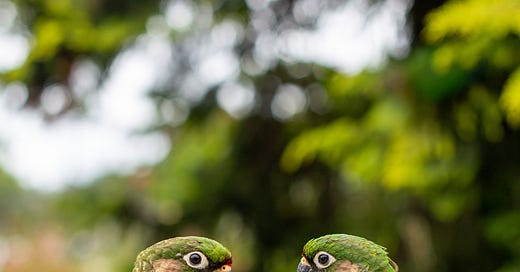“The artist appeals to that part of our being…which is a gift and not an acquisition—and, therefore, more permanently enduring.” — Joseph Conrad
Thus Lewis Hyde begins his book The Gift: Creativity and the Artist in the Modern World. It’s a fitting invocation to this beloved book about the nature of gift, art and the interconnection between the individual and the community.
Margaret Atwood wrote in The Paris Review that The Gift is “a book about the core nature of what it is that artists do, and also about the relation of these activities to our overwhelmingly commercial society.”
She added, “If you want to write, paint, sing, compose, act, or make films, read The Gift. It will help to keep you sane.”
After hearing these praises of this book, I read The Gift earlier this year. (After all, this was a recommendation from Atwood, THE Queen of Canadian Literature.) It turned out that The Gift intertwines folklore, fairy tales, fables and modern stories to explore a myriad of fascinating questions, such as: How can artists survive in an economy dominated by market exchange? What is the role of the individual within a community? Is there a difference between ‘work’ and ‘labour’? How much of an artist’s labour is creation versus invocation? How does one become receptive to nature’s gifts?
For me, the kaleidoscope of questions and ideas explored in The Gift was an essential part of what made the book so vibrant and incandescent.
Every now and then, parts of it come to me while I am sitting at my desk or taking a walk outside. It is the kind of a book you come back to over and over again – for renewal of hope, for reminder of wisdom and for replenishment of something vital inside yourself.
There are a number of stories from The Gift that have stayed with me, but the story of Pablo Neruda in the conclusion of the 2007 edition holds a particular magic for me, and I feel like sharing it in today’s letter:
Here it is, from pages 367-368 of the 2007 edition of The Gift published by Vintage Books:
Playing in the lot behind the house one day when he was still a little boy, Neruda discovered a hole in a fence board.
“I looked through the hole and saw a landscape like that behind our house, uncared for, and wild. I moved back a few steps, because I sensed vaguely that something was about to happen. All of a sudden, a hand appeared—a tiny hand of a boy about my own age. By the time I came close again, the hand was gone, and in its place there was a marvellous white toy sheep. The sheep’s wool was faded. Its wheels had escaped. All of this only made it more authentic. I had never seen such a wonderful sheep. I looked back through the hole but the boy had disappeared. I went into the house and brought out a treasure of my own: a pine cone, opened, full of odor and resin, which I adored. I set it down in the same spot and went off with the sheep. I never saw either the hand or the boy again. And I have never seen a sheep like that either. The toy I lost finally in a fire. But even now … whenever I pass a toyshop, I look furtively into the window. It’s no use. They don’t make sheep like that anymore.”
Hyde goes on:
Neruda has commented on this incident several times. “This exchange of gifts—mysterious—settled deep inside me like a sedimentary deposit,” he once remarked in an interview. And he associated the exchange with his poetry.
“I have been a lucky man. To feel the intimacy of brothers is a marvellous thing in life. To feel the love of people whom we love is a fire that feeds our life. But to feel the affection that comes from those whom we do not know, from those unknown to us, who are watching over our sleep and solitude, over our dangers and our weaknesses—that is something still greater and more beautiful because it widens out the boundaries of our being, and unites all living things. That exchange brought home to me for the first time a precious idea: that all humanity is somehow together … it won’t surprise you then that I have attempted to give something resiny, earthlike, and fragrant in exchange for human brotherhood…This is the great lesson I learned in my childhood, in the backyard of a lonely house. Maybe it was nothing but a game two boys played who didn’t know each other and wanted to pass to the other some good things of life. Yet maybe this small and mysterious exchange of gifts remained inside me also, deep and indestructible, giving my poetry light.”
There is joy in learning something by reading something new, but there is an even greater joy when I learn something new by reading something I’ve already read.
These days, I’m re-reading parts of The Gift and I’m still learning something new.
The Gift has been giving lots of gifts to me, and I hope it gives of itself to you too.
PS: There is a delightful essay by Hyde published in The New York Times in July 2023: https://www.nytimes.com/2023/07/30/opinion/butterfly-hunting-attention.html
In his author bio at the end, it says Hyde is at work on a book about butterfly hunting!!! I can’t wait to read that!!!
PPS: If you’re reading this and you haven’t yet subscribed, please consider becoming a subscriber to this free, biweekly newsletter. And if you feel called to, please feel free to share this newsletter too.
Thank you for being here.
Reference: Hyde, Lewis. The Gift: Creativity and the artist in the modern world. Vintage, 2007.




